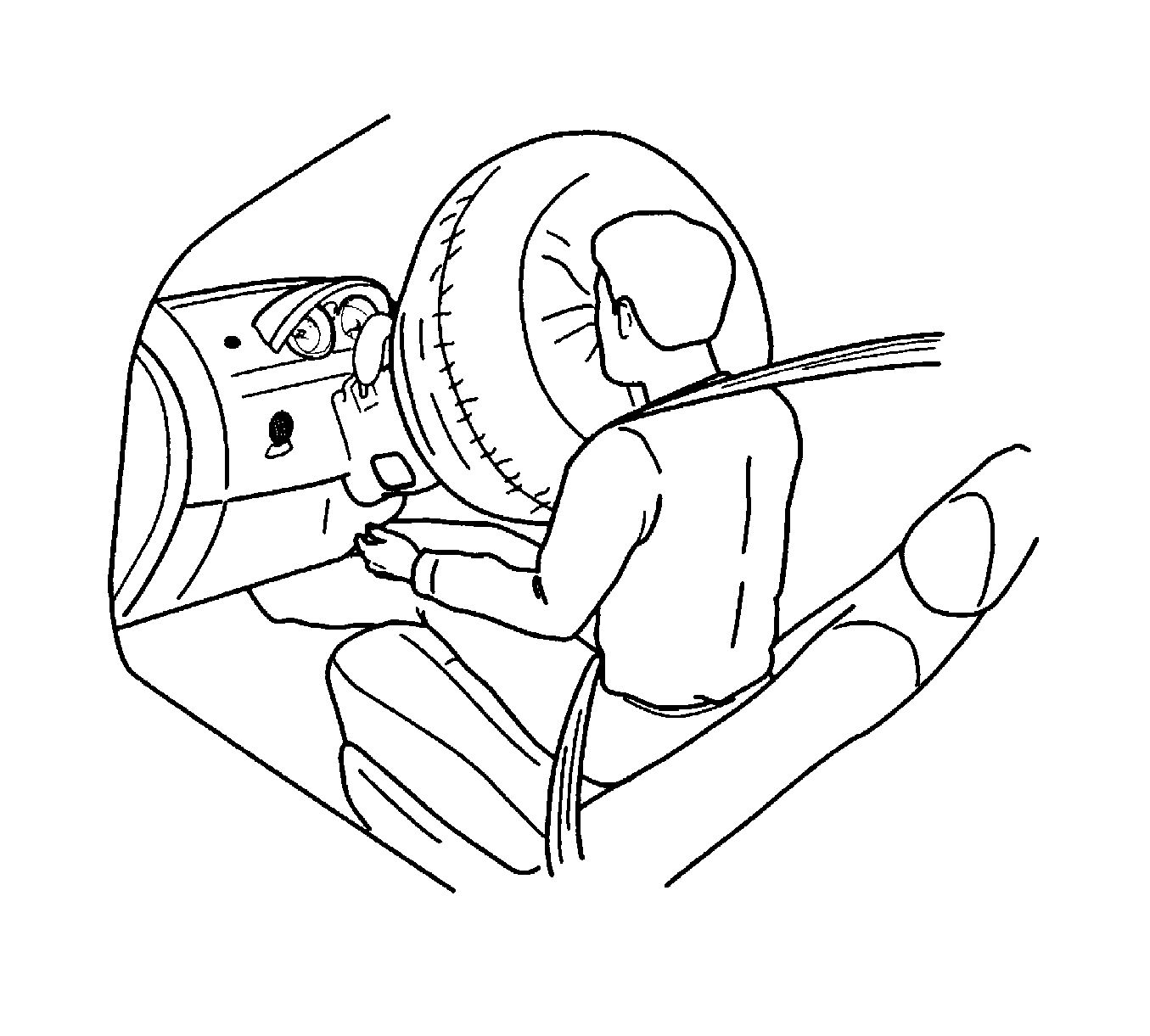
The supplemental inflatable restraint (SIR) is a safety device used in conjunction with the seat belt. The air bag does not replace the function of the seat belt. The driver and the passengers must always fasten their seat belts and adjust them for a proper fit.
The SIR is designed to protect the driver and the front seat passenger in the event of a significant frontal impact to the vehicle. The air bags deploy if the force is applied from a direction within 30 degrees of the vehicle center line.
The SIR system consists of the following components:
| • | Driver air bag module |
| • | Driver side air bag module |
| • | Passenger air bag module |
| • | Passenger side air bag module |
| • | Driver and front passenger seat belt pretensioners, and load limiter for some models |
| • | Sensing and diagnostic module (SDM) |
| • | Clock spring |
| • | Wire harness and connectors |
| • | AIRBAG indicator on the instrument cluster |
| • | Passenger AIRBAG OFF indicator on the clock screen |
| • | Side air bag sensor |
| • | Occupants classification system (sensor and module) (North America Vehicles) |
| • | Early crash sensor (North America Vehicles) |
Air Bag Modules

Steering Wheel Module
Warning: Refer to SIR Warning in the Preface section.
The steering wheel module is under the center pad of the steering wheel. The steering wheel module contained an igniter charge and a gas generator to inflate the folded air bag.
The air bag connector contains a shorting bar which makes the circuit shorted when the connector is disconnected. The shorting bar prevents current from travelling through the steering wheel module during servicing. The shorting bar is disengaged when the connector is connected.
Instrument Panel (I/P) Module
Warning: Refer to SIR Warning in the Preface section.
The instrument panel (I/P) module is on the passenger part of the I/P. The I/P module contains an igniter charge and a gas generator to inflate the folded air bag.
The air bag connector contains a shorting bar, which makes the circuit shorted when the connector is disconnected. The shorting bar prevents current from travelling through the I/P module during servicing. The shorting bar is disengaged when the connector is connected.
Side Air Bag Module
Warning: Refer to SIR Warning in the Preface section.
The side impact modules are in the driver’s and passenger’s seats. The side air bag module contains an igniter charge and a gas generator to inflate the folded air bag.
The air bag connector contains a shorting bar, which makes the circuit shorted when the connector is disconnected. The shorting bar prevents current from travelling through the side air bag module during servicing. The shorting bar is disengaged when the connector is connected.
Front Seat Belt Pretensioners
Warning: Refer to SIR Warning in the Preface section.
The seat belt pretensioners, with load limiter for some vehicles, are assembled with each front seat belt retractor to retract the seat belt webbing when accounted frontal collision. The seat belt pretensioners are controlled by the sensing and diagnostic module (SDM). The seat belt pretensioner contains an igniter charge and a gas generator to pull the seat belt webbing. The seat belt pretensioner must be replaced after an accident that causes its activation.
The seat belt pretensioner also contains a shorting bar to prevent current from travelling through the seat belt pretensioner during servicing. The shorting bar is disengaged when the connector is connected.
Sensing and Diagnostic Module (SDM)
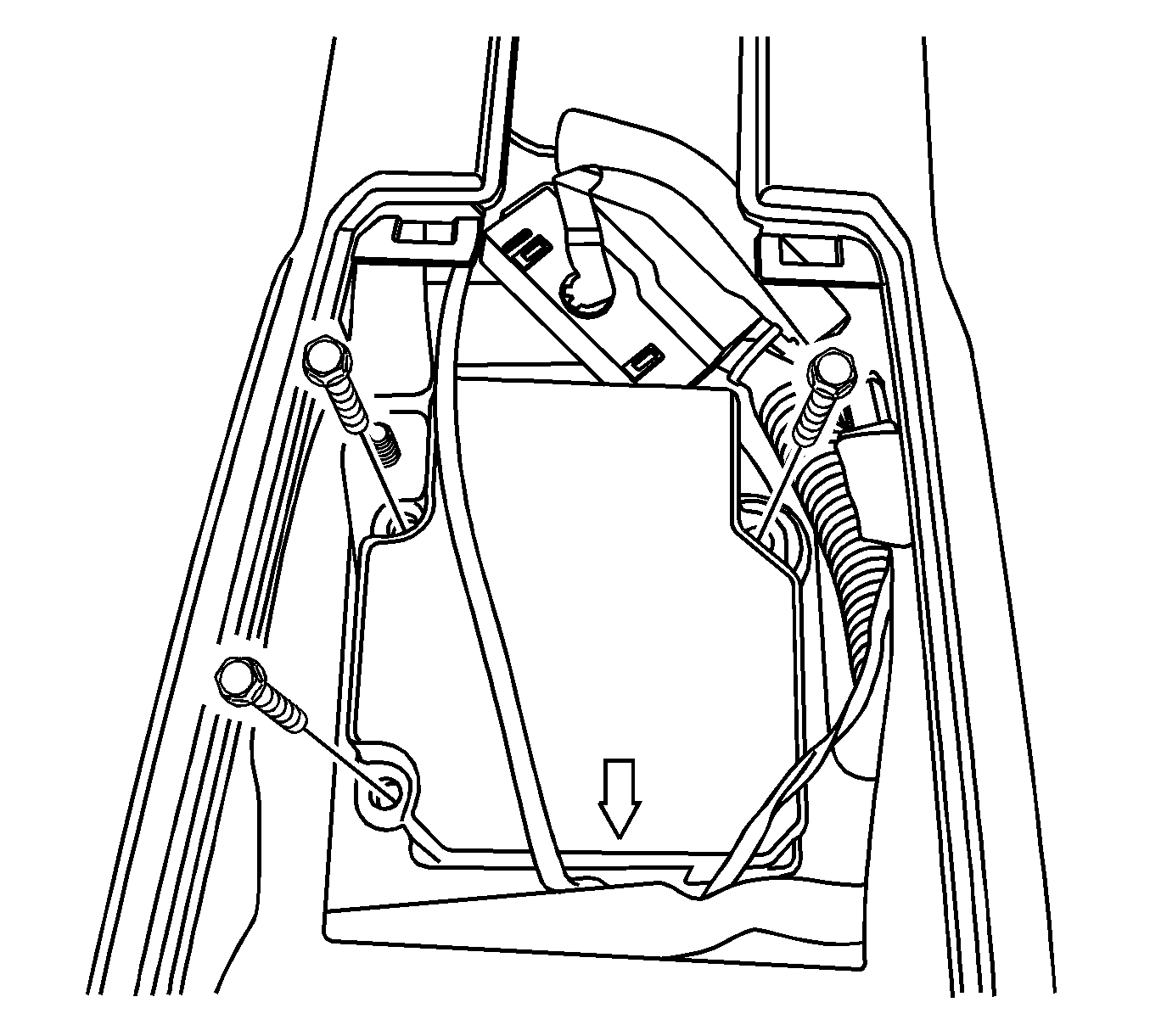
Warning: Be careful when you handle a sensing and diagnostic module (SDM). Do not strike or jolt the SDM. Before applying power to the SDM:
• Remove any dirt, grease, etc. From the mounting surface. • Position the SDM horizontally on the mounting surface. • Tighten all of the SDM fasteners and SDM bracket fasteners to the specified torque value. Failure to follow the correct procedures could cause air bag deployment, personal injury, or unnecessary SIR system repairs.
The sensing and diagnostic module (SDM) is located on the floor beneath the floor console assembly. The SDM performs the following functions:
| • | Monitors the supplemental inflatable restraints (SIR) electrical components and sets a DTC when malfunction is detected |
| • | Records any faults that are discovered |
| • | Displays SIR DTCs and system status information when connected to a scan tool |
| • | Illuminates the Air Bag indicator to alert the driver to any fault |
| • | Provides a reserve power source to deploy the air bags and pretensioners if an accident has disabled the normal power source |
| • | Monitors vehicle velocity changes to detect frontal impacts, which are severe enough to warrant deployment |
| • | Causes current to flow through the air bag modules and pretensioner to cause deployment if a frontal impact of sufficient force is detected |
The SDM contains no user-serviceable parts.
Passenger Air Bag Disable Switch - Except North America Vehicles
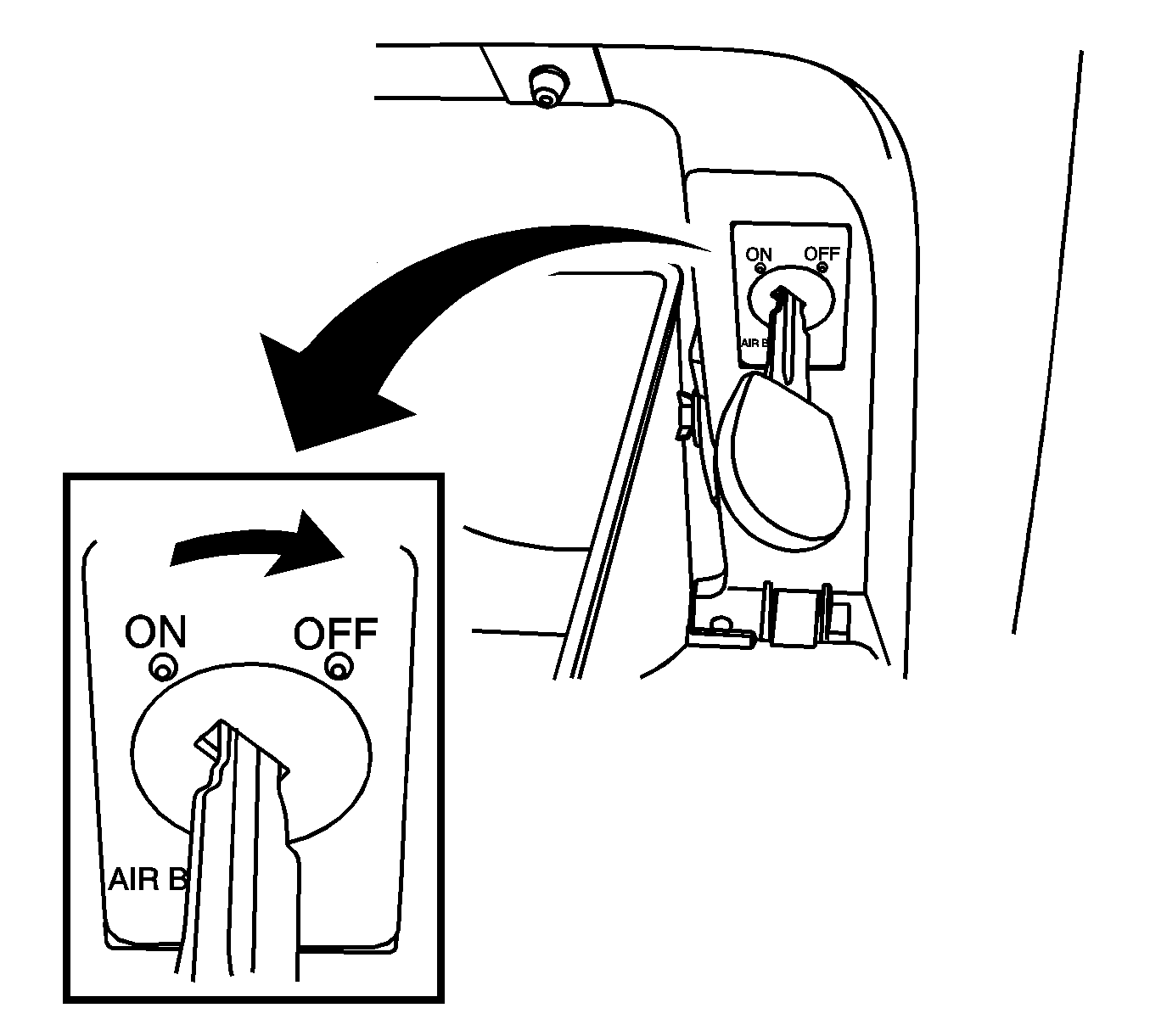
The disable switch is located on right side of glove box housing. Operation of passenger frontal and side airbag can be controlled manually by this switch. Operation of the disable switch use the ignition key of vehicle. If the disable switch is turned to "ON" or "OFF" using the ignition key, the passenger frontal and side airbag will also be "ON" or "OFF".
Passenger Air Bag Off Indicator - Except North America Vehicles

The operation status of passenger frontal and side airbag is displayed on the passenger airbag "OFF" lamp that is located on clock. If the passenger airbag disable switch is turned to the "OFF" position, the passenger airbag "OFF" lamp will be turned "ON". In the disable switch "ON" position, the passenger airbag "OFF" lamp will be turned "OFF".
Air Bag Warning Lamp
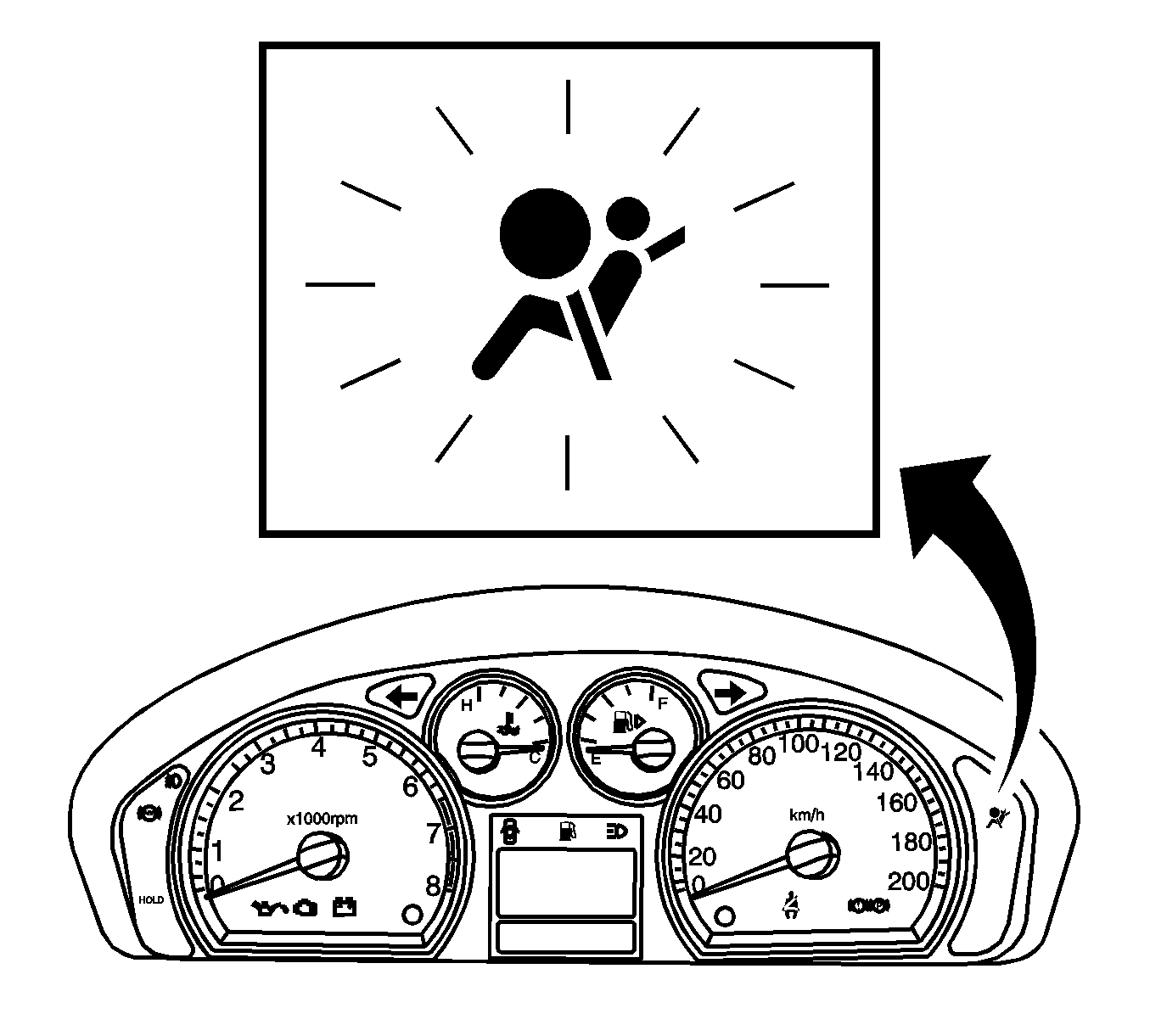
The instrument cluster contains an Air Bag Warning indicator and sensing and diagnostic module (SDM). The SDM performs a turn-on test when the ignition is turned ON.
The SDM flashes the Air Bag indicator 6 times by supplying an intermittent ground to the indicator lamp circuit. After flashing 6 times, the Air Bag indicator will turn OFF if no more malfunctions have been detected.
If the SDM has detected malfunctions in the internal and external circuits, which could potentially affect the operation of the supplemental inflatable restraints (SIR), the Air Bag indicator stays ON. Some malfunctions could result in non-deployment when necessary or deployment under conditions which would not normally result in deployment.
When the SDM is not properly attached to its connector, the air bag circuit is shorted to ground because there is a shorting bar in the SDM electrical connector. The shorting bar is disengaged when proper connection is made, but if a poor connection exists the SDM connector supplied a ground to the Air Bag indicator independently of the SDM, and the Air Bag indicator turns ON.
Steering Wheel Module Coil
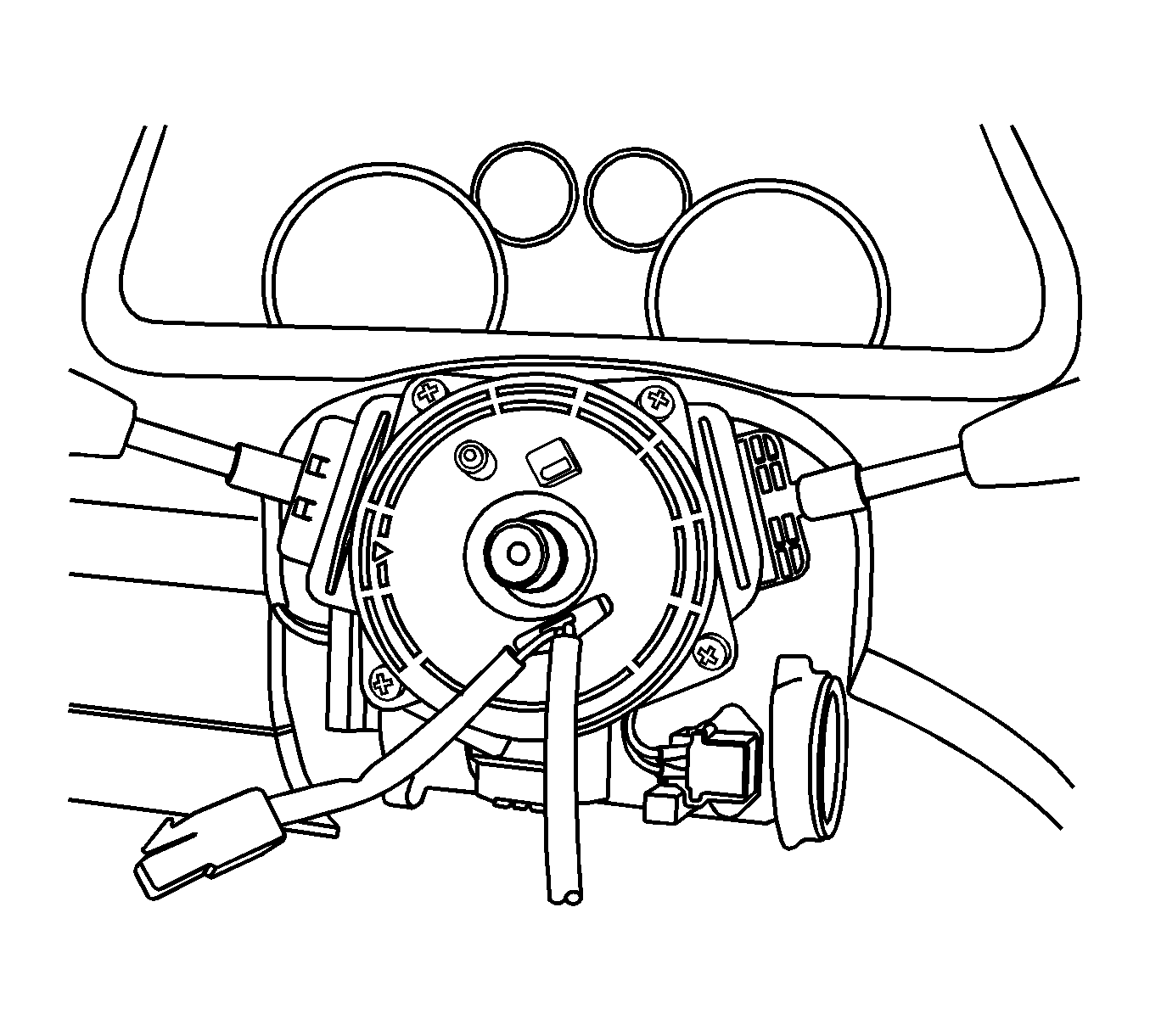
Warning: Improper routing of the wire harness assembly may damage the inflatable restraint steering wheel module coil. This may result in a malfunction of the coil, which may cause personal injury.
Caution: Do not rotate the steering wheel or move the position of the steering gear once the intermediate shaft is disconnected. This will uncenter the Inflatable Restraint coil in the steering column. If the Inflatable Restraint coil becomes uncentered, it may be damaged during vehicle operation.
There is a coil assembly in the steering which is referred to as a steering wheel module coil because of its internal resemblance to the type of spring used in a mechanical clock. The coil spring should never be disassembled, and there is no time keeping function. The steering wheel module coil contains 2 or 3 current-carrying coils. One of the current-carrying coils maintains continuous contact within the driver deployment loop while the steering wheel is rotated. The steering wheel module coil also contains coils that maintain continuous contact for horn and remote audio control switch circuit.
Turning the steering wheel in one direction tightens the coil, and turning the steering wheel in the opposite direction loosens the coil. Do not turn the steering wheel module coil when the steering wheel is not attached. For proper installation of the steering wheel module coil, refer to Inflatable Restraint Steering Wheel Module Coil Replacement.
The steering wheel module coil also includes the wiring and the connectors for the horn circuit and the driver air bag circuit. A yellow 2-way connector on the lower steering column is attached to the steering wheel module coil wiring. The yellow connector to the air bag contains a shorting bar which connects the driver high circuit to driver low circuit when the connector is disconnected.
The shorting bar prevents current from travelling through the steering wheel module during servicing. The shorting bar is disengaged when the steering wheel module coil connector is connected.
Occupants Classification System (OCS) - North America Vehicles
OCS determines passenger airbag deployment. It consists of a sensor and module which are in the passenger seat.
OCS monitors the pressure profile of the passenger seat and sends it to the sensing and diagnostic module (SDM).
When the pressure from the occupant’s weight is higher than a specified value, the OCS module will send an enable signal to the SDM to deploy the passenger airbag.
When the passenger airbag on and off indicators are lit on the passenger airbag status indicator, it indicates the suppression of deployment for the passenger’s frontal airbag and side airbag.
When the passenger seat cushion assembly is replaced, be sure to confirm that the OCS operates normally as follows:
- Turn the ignition switch ON.
- Check the passenger airbag on and off indicators in clock illuminate for 5 seconds and turn off for 2 seconds. If the both indicators turn on or off depending on the status of passenger presence after step 2, OCS is in good condition.
OCS is not unit repairable so it should be replaced with an assembly of passenger seat cushion.
Early Crash Sensor (ECS) - North America Vehicles
Early crash sensors (ECSs) are located on both LH and RH side of longitudinal. ECS detects frontal impact of the vehicle and transmits the information to the sensing and diagnostic module (SDM).
